First of all, let's be clear - You are perfect as you are! But If keeping a balanced diet is important to you plus, you don't really want to totally give up snacking, this list is a great start. We compiled some of the top tips from models and nutritionists on their favorite go-to snacks and foods. Apparently, there are many foods at the store that you can eat in pretty large portions that are perfect for someone watching their weight. These foods will satisfy your hunger and can be eaten in generous portions and variations. Put it up on your refrigerator!
1. Avocados
Avocados contain high levels of healthy fats. It is specifically high in the same kind of fat found in olive oil. Despite containing fat, avocados also have high volumes of fiber and water, making them less energy-dense than most people assume.

They’re a great addition to vegetable salads, as their fat content can increase antioxidant absorption from the vegetables. Perfect also added to spreads, dips, and even in smoothies. They contain numerous important nutrients, like potassium.
2. Pineapple
The manganese content of pineapples assists your body, especially your muscles, in metabolizing protein in your diet. It’s solid for promoting weight control. Pineapples are also fantastic sources of vitamin C and are most delicious when eaten fresh.

Pineapples can be used for dishes like summer salads, shakes, and even chicken. If you were scared of adding pineapple to your diet because someone told you fruits are high in sugar, and you should stay away from them, now is the time to rewrite that narrative.
3. Popcorn
When we say popcorn, we mean unseasoned, air-popped popcorn. It is naturally high in antioxidants and dietary fiber, low in fat and calories, and has no sodium or sugar. This can make it an amazing snack for people with dietary restrictions.

As far as flavoring, however, large amounts of fat, sodium, and sugar are typically added to prepared popcorn, which can quickly change it to a very unhealthy choice for those on restricted diets. One cup (around 8 grams) popped without any added seasonings is about 45 calories.
4. Eggs
There is a reason that farmers always make sure to have plenty of chickens. People are happy to work hard for fresh eggs daily. A poached or boiled egg is packed with protein that your body needs to satisfy hunger, maintain your weight, and use for energy.

Eggs give our bodies significant amounts of multiple vitamins and minerals, from vitamin A to zinc. Though, the way you cook it does affect the nutritional value of the eggs. The yolk alone has more than two-thirds of the recommended daily cholesterol intake.
5. Tomatoes
A medium-sized tomato has about 22 calories. They are a great source of the antioxidant lycopene, which reduces the risk of cancer and heart disease. They are also a wonderful source of folate, potassium, vitamin C, and vitamin K. Plus; any tasty Italian dish starts with quality tomatoes.

Many chefs will agree that the tomato is the ultimate cooking ingredient. They start slicing a tomato without really knowing what they are going to do with it. There’s a reason you find it in so many recipes, at least as a supporting role.
6. Apples
Our bodies require sugar to operate, but when dieting, forget the bubbly beverages and sweet treats. Apples ought to be an integral part of your diet plan since their low number of calories, and high fiber content will enhance your weight loss long term.

The fiber in one apple will have you feeling full for hours and satisfy a craving for something sweet. We recommend eating it with the skin because it contains most of the nutrients. An average apple weighing 100 grams or 3.5 ounces is about 50 calories.
7. Miso Soup
We’ve been to Japan and began each day with a bowl of Miso Soup for breakfast. Talk about a tasty treat! Miso soup is surprisingly low in calories, making it a wonderful choice for any meal. Prepared in its basic form, a 1-cup serving only has 35 calories.

Miso has many essential minerals and is a great source of folic acid, various B vitamins, vitamin E, and vitamin K. As a fermented food; Miso supplies the gut germs with beneficial bacteria that help maintain our health.
8. Cucumber
A fruit that is mostly made up of water, cucumbers only contain 16 calories per serving. Eating cucumbers will aid in reducing bloating and fluid retention because, for every 100 grams of cucumber, around 95 grams of that is water.

The seeds and peel provide both fiber and a type of vitamin A called beta-carotene, which is good for your eye health. And did we mention how yummy it is?! Try cutting it into strip-shaped noodles and pair with a peanut butter-based sauce.
9. Citrus Fruits
Though high in sugar, citrus fruits, including grapefruit, mandarins, oranges, tangelos, and tangerines, are rich in flavonoids and vitamin C. They are recommended to help with your digestion, liver health, skin, and weight control. These fruits are best consumed freshly peeled and eaten.

The peel of some citrus fruits can be used to make tea and cleaning solutions. Many nutritionists suggest starting each day with a glass of water with freshly squeezed lemon juice which can cause a smoother digestive tract and help with weight control and loss.
10. Brown Rice
Rice can be used in so many dishes. Brown rice is a healthier, fiber-packed alternative to the typical white rice. Did you know you could burn fat while eating? Well, a half-cup serving has 1.7 grams of a type of starch that burns fat and increases metabolism.
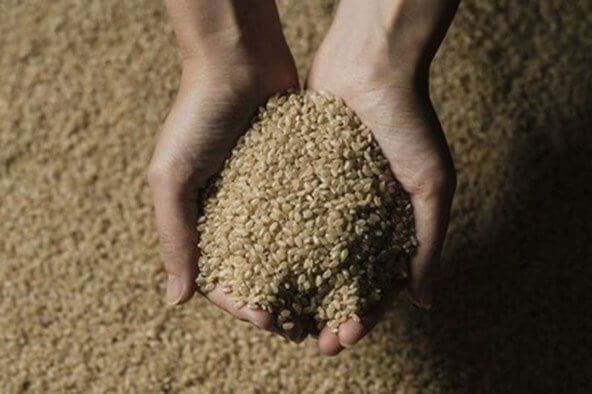
We know the health industry around the word “brown” quite a bit, but when it comes to rice, brown is actually healthier than white rice. Brown rice is a low-energy-density food, which means that despite being low in calories, it’s heavy and filling.
11. Cantaloupe
Cantaloupe has more beta carotene — a type of vitamin A that boosts eye health — than many other fruits like grapefruits, mangoes, oranges, and peaches. One cup of this fruit provides you with 100% of your daily suggested amount of vitamins A and C, as well as a good amount of potassium.

Water makes up nearly 90% of cantaloupe, so that means that there are only 55 calories per serving. It is a delicious, nutritious addition to any smoothie and pairs well with either prosciutto or cottage cheese as a snack.
12. Eggplant
Eggplant – also referred to as aubergine – is an additional veggie that has high water content, is rich in fiber, and is low in calories. Always best to prepare it first by grilling or baking it with little to no added oils as it has small, bitter pits.
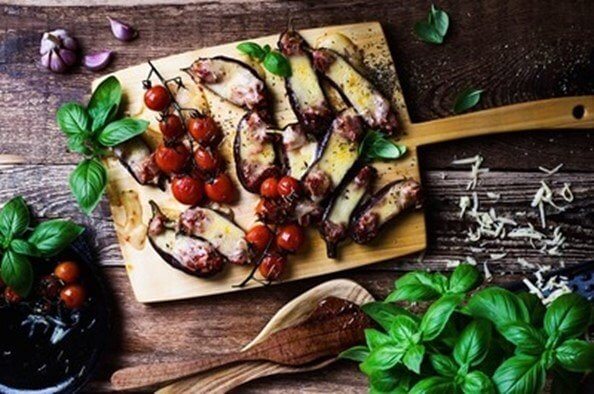
The plant species is believed to have started in India, where it continues to grow freely. It has long been cultivated in eastern and southern Asia. It is a yummy extra to any sandwich, salad, or main course. A serving of 100 grams or 3.5 ounces of eggplant is approximately 25 calories.
13. Melons
Originally from Africa and related to cucumber and squash, melons have remained popular since the ancient world for being a refreshing, hydrating, and incredibly healthy fruit. Melons are 90% water, essentially fat-free, and boost detoxification to rid your body of excess fluids.

A 100-gram – or 3.5-ounce – serving of watermelon has 30 calories. There is numerous melon serving recommendations for any need or purpose. It makes no difference how you choose to serve it as long as it is nice and cold.
14. Nuts
High in fat, nuts can be a great snack when eaten in moderation. They have balanced amounts of fiber, protein, and some healthy fats. Eating nuts can improve metabolic health and even promote weight loss when combined with the right program.

Studies have shown that those who eat nuts live longer, suffer less from certain cancer types, and had a healthier body. Nuts still pack a lot of calories, so just make sure to be mindful of your portions. If you struggle with self-control, it might be best to avoid them.
15. Red Berries
Red berries like cranberries, raspberries, and strawberries are full of antioxidants, vitamin C, and fiber. These nutrients boost your digestive system and promote a healthy heart. Strawberries are also helpful in controlling blood sugar levels.

Strawberries are considered to be the ultimate low-calorie diet dessert. Fun fact: if you have a headache, eat some strawberries because they have a natural ingredient also found in aspirin. So next time your head is really pounding, and you don’t have any aspirin, snack on some strawberries.
16. Tuna
Tuna is a high-protein, low-calorie food. No wonder the Japanese swear by it, and it is so popular in Sri Lanka and Tokyo. It is a type of fish that is low in fat. It is best when eaten fresh rather than out of a can whenever possible.

Incorporating tuna is a perfect way to have more protein without increasing total fat and calorie intake. If you are trying to focus on protein intake, make sure to go for the tuna canned in water instead of oil. Specifically for after your workouts.
17. Salmon
Fatty fish like salmon is satisfying and healthy, keeping you feeling full for hours for a relatively low number of calories. Salmon is filled with important nutrients, protein, and healthy fats. And it’s so simple to make fresh and delicious.
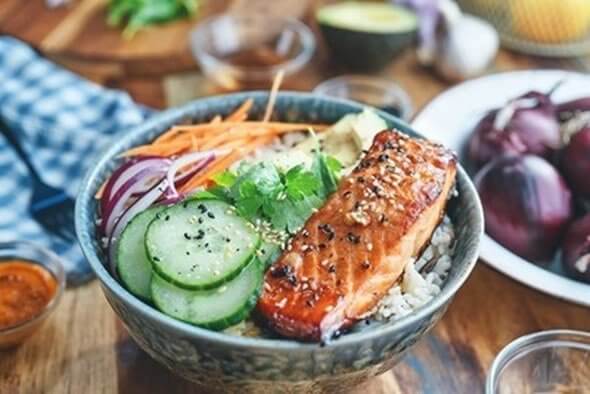
Salmon also has omega-3 fatty acids, which help reduce inflammation that promotes metabolic disease and obesity. Fish also supplies a significant amount of iodine which is vital for proper thyroid function. This is crucial to keep your metabolism running correctly.
18. Blueberries
Another dessert-oriented fruit with a sweet reputation. First, their claim to fame is their high antioxidant content. Blueberries hold the title for the fruit with the most antioxidants, which is what makes them so popular.
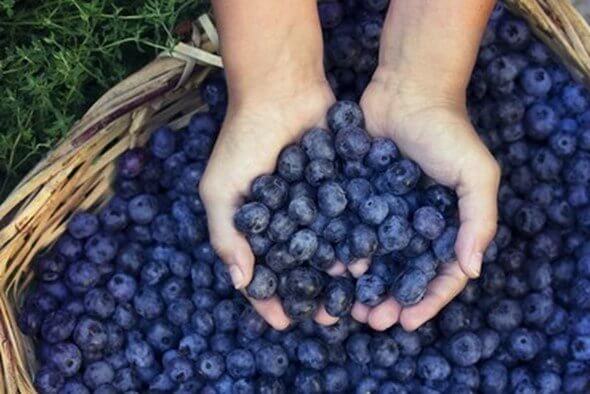
For all of the fiber, a cup of blueberries contains — 14% of your suggested daily value — it only packs around 85 calories. Now it is clear why people have been eating blueberries for the past 13,000 years and is surprisingly native to the continent of North America.
19. Algae
Algae, as in seaweed. These infamous water lettuces float around bodies of water and grow on rocks and coral. Many nations globally, going back to ancient times, have always been aware of the benefits of eating seaweed and incorporating it into a daily menu.

Natural seaweeds are a substantial source of food, particularly in Asia. They contain many vitamins like A, B1, B2, B6, C, and niacin and are packed with calcium, iodine, iron, magnesium, and potassium. Commercially grown seaweed is marketed as nutritional supplement.
20. Mushrooms
Mushrooms are packed with minerals and vitamins, with few calories because they’re 90% water, so they’re the perfect diet food. There are infinite ways to eat mushrooms; baked in a pie, fried with noodles or rice, raw in a salad, and however, you like in assorted soups.
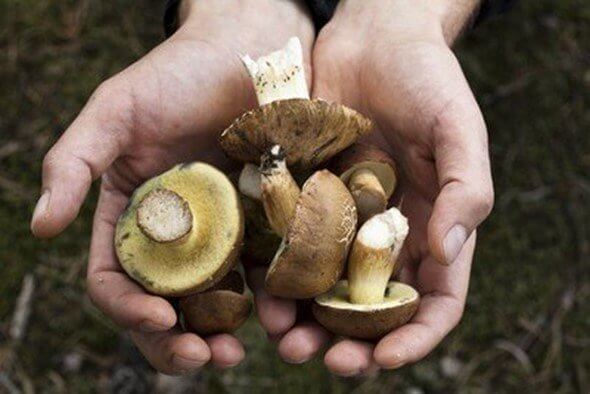
Fun fact: mushrooms are considered just as filling as beef! Nutritionists recommend eating mushrooms raw, as this contains the most nutrients for the least number of calories. One cup of cooked mushrooms contains 77 calories.
21. Legumes
Legumes include foods like lentils and peas that are super filling because they’re packed with protein and fiber. Their calorie count is low for how much comes in a serving. Several studies found that beans, chickpeas, lentils, and peas are 31% more filling than grain products.
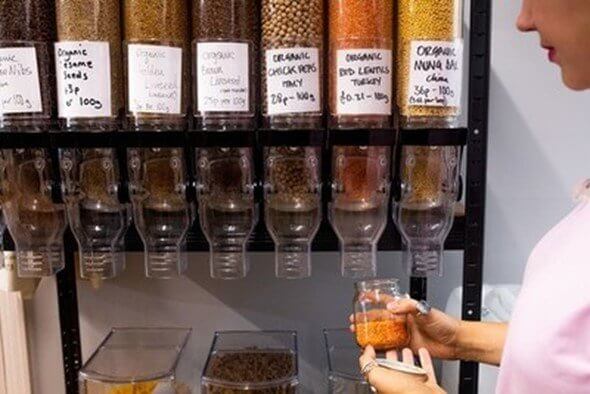
Did you consider quinoa to be a high-protein food? Lentils have twice the amount of protein per serving compared to quinoa. Plus, black beans are a great source of iron. In addition to having a low energy density, legumes are worth including in your next meal.
22. Cottage Cheese
According to historians, cottage cheese was first discovered in the 3rd century BCE when a shepherd accidentally filled a sheep’s stomach with milk, which resulted in cheese curds. Cottage cheese is a delicious yet super-healthy weight loss-friendly food.
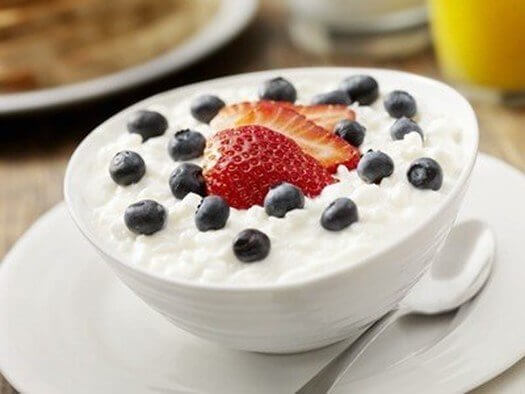
It’s rich in calcium, phosphorus, protein, and vitamin B. It leaves you just as full as when you eat an egg and is low in calories. It’s a perfect substitute for heavier cheeses in dishes. These characteristics make cottage cheese the star that it is.
23. Chia Seeds
Chia seeds are one of the most nutritious foods in the world. They are a part of the superfood group with the highest nutrition levels. For every ounce of chia seeds, it contains 11 grams of fiber, so after a small bowl, you are guaranteed to feel full.
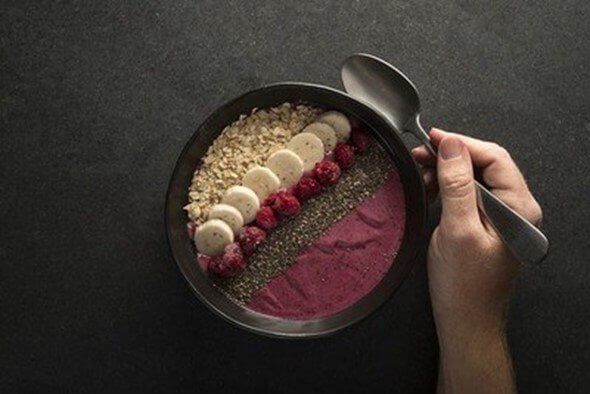
This makes chia seeds one of the ideal sources of fiber as a low-carb-friendly food. Because of their high level of fiber, chia seeds have the ability to absorb up to 11–12 times their weight in water, becoming gel-like and perfect for smoothies and desserts.
24. Coconut Oil
Coconut oil isn’t an ingredient that you eat with a spoon straight from the jar, but it’s possible without gaining significant weight. Coconut oil is high in fatty acids that help increase metabolic efficiency, called medium-chain triglycerides (MCTs).

These fatty acids keep you feeling full better than other fats and boost the number of calories burned. It’s less about adding coconut oil to your diet on top of everything else but instead substituting some of your other cooking fats like butter or vegetable oil with coconut oil.
25. Kale
So not a personal kale fan but, many nutritionists and chefs swear by it. Per serving, kale is low on calories — one cup of raw kale only contains 33 calories — but it has about 2.5 grams of fiber and three grams of protein.

Second, it’s one of few foods that has a good amount of omega-three fatty acids, a nutrient that most of us rely on seafood to get but, for instance, vegans can get from kale. Similar to other types of lettuce, kale is also high in folate and vitamins.
26. Pears
A pear has only 100 calories and zero (!!!) fat. There are over 3,000 types of pears grown across the planet, and people put them in everything from desserts to meat dishes to salads. Packing a lot of fiber prevents constipation and boosts regularity for a healthier digestive tract.

Pears have high levels of antioxidants, like copper, vitamin C, and vitamin K. China produces the most pears, followed by the entirety of Europe, with the United States as the third-largest producer. Some pears grow inside bottles on the tree so they can be harvested for liquors when ripe.
27. Fish
Some people avoid ordering fish at restaurants for fear that they’ll still be hungry after the meal, but it’s actually the opposite. Fish are packed with omega-3 fatty acids, contain high-quality protein (which is very filling), and it’s just so tasty.

Compared to other protein-rich foods, fish got a higher score on the satiety index and ranked second for all foods tested, including beef and chicken. Another study found people who consumed fish ate 11% fewer calories at their next meal than those who consumed beef.
28. Radishes
It is not the most popular vegetable among children and most adults, but it trusts us when we confidently say that it is so underrated and underestimated. With their crunchy texture and spicy flavor, it will be tough to find the perfect sandwich without them in it.
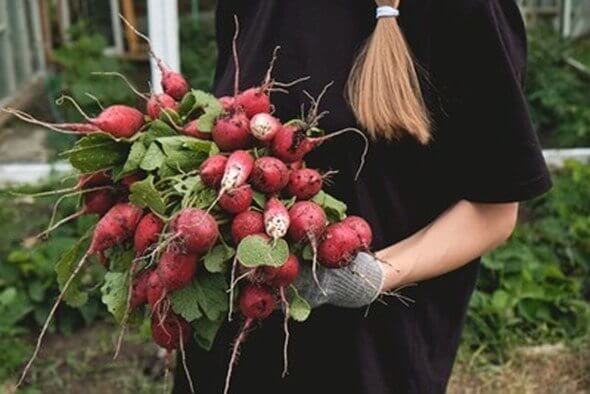
You can add it to salads, soups, and entrees and as a delicious snack. One cup contains only 19 calories, which packs some flavor, and vitamin C, for no calories. They make a special edible garnish on any bowl, plate, or table setting with their distinct pinkish-red color.
29. Hot/Cold Brew Coffee
Before sprinting to Starbucks, we are not talking about a pumpkin spice latte. Coffee in its pure brew form is packed with nutrients and antioxidants to maintain general health. Legend says that it was discovered around 800 CE when shepherds noticed the effect the plant had on their flock.

Almost 33% world’s coffee is grown in Brazil, and in the United States, they harvest it in California and Hawaii. It gets us through the mornings and long workdays. But brew coffee has next to no calories in it. Just remember that when thinking about adding sugar and milk.
30. Oatmeal
Oatmeal is a kind of porridge that is in the diets of many athletes and nutritionists. It’s very filling and ranks third on the satiety index. This is because it is packed with fiber, and it's the ability to absorb water. Some parents put it into their babies’ food to help them sleep better.
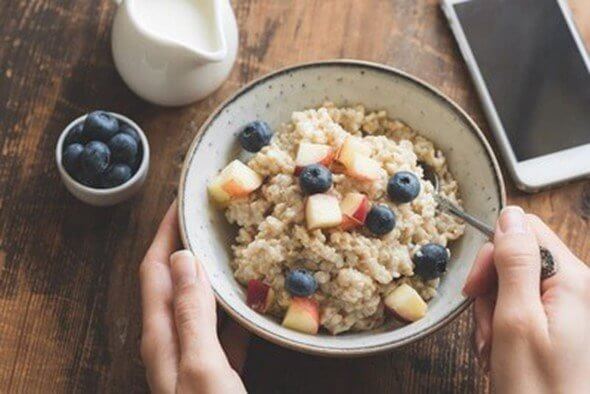
Oats are a great source of a soluble fiber named beta-glucan, which slows down digestion and carb absorption. Eat it for breakfast to give you some energy that you would otherwise find in salty snacks. It will most likely hold you over until lunch.
31. Cabbage
Every time I want a quick salad or to add some color to a table, I cut cabbage quickly. So, it’s extremely easy to add as an ingredient and is the star of several oriental kitchens. Cooked or raw, it’s very low in calorie content and only has 22 calories per cup.

Health fact: Cabbage contains an absurd amount of vitamin C, which helps cut out your body’s toxins, and prevents skin diseases and rheumatism. If you are focusing on vitamin C, then consider red cabbage. It has twice the amount of Vitamin C as the typical green cabbage.
32. Beetroot
Typically, the beetroot roots are eaten boiled, juiced, raw, or roasted, and either by themselves or combined with other salad vegetables (just add olive oil and lemon juice). A large portion of the commercial production is boiled and sterilized beets or pickled.

Besides being tough to get rid of, Beetroot is packed with magnesium, manganese, minerals, nutrients, and water content. This helps regulate your blood sugar, muscles, and nerve function. The breakdown of raw beetroot is 10% carbohydrates, less than 1% fat, 2% protein, and 88% water.
33. Celery
The satisfying crunch of celery sticks will help out your body rid itself of toxins. This is due to celery being nearly 95% water, but that doesn’t mean the vegetable doesn’t have other significant health benefits. Celery is great for weight loss diets because it provides a lot of low-calorie dietary fiber.

A high level of dietary fiber contributes to your digestion, while the other vitamins and minerals help to maintain a healthy body. Eat your celery while it’s fresh because it loses its antioxidants after five days.
34. Asparagus
This green delight is actually super healthy for you, and if cooked correctly, can be quite tasty. In the wild, asparagus also grow in white and purple. Purple asparagus is incredibly healthy because of its high levels of anthocyanins which can help avoid heart diseases.

One cup of cooked asparagus only contains 30 calories and will boost up your folate levels and vitamin K. If you don’t enjoy eating regular plain asparagus, there are numerous recipes that actually do it justice, so don’t be scared to try some of them.
35. Carrots
Carrots are delicious, pair well with thousands of recipes, and they are a fantastic source of antioxidants, beta carotene, fiber, and vitamin K1. If you are searching for a simple midday snack or an additional vegetable to any recipe, carrots are perfect.

Now, are carrots actually good for your eyesight? YES! If you have low levels of vitamin A, you are likely to be night blind. The solution is to raise your vitamin A intake by eating more carrots! Carrots are also known to help prevent heart disease and cancer.
36. Papaya
This delicious food grows in tropical climates. The orange fruit with the little black seeds might parallel a melon, but it is much more healthy than its green relative. Papayas are a wonderful source of antioxidants and can help prevent asthma, prostate cancer, and bone diseases.
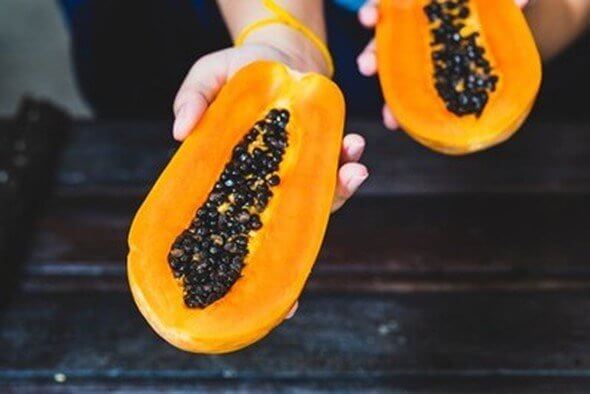
Today, science has embraced the fruit, as there are an array of vitamin-rich ointments that contain papayas. In summary, next time you have a craving for something healthy yet sweet, eat papaya. It’s tasty and guilt-free with just 120 calories!
37. Greek Yogurt
Most regular yogurts are heavily filled with sugar and various toppings that are just so unhealthy for you. If you want to enjoy a genuinely healthy snack with only around 100 calories, 12 grams of carbs, and fat-free, grab a plain greek yogurt.
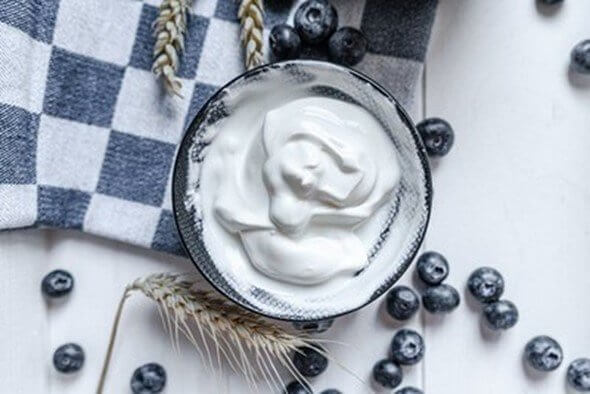
A medium-sized portion of 3.5 ounces of Greek yogurt can be an incredible source of calcium, potassium, protein, vitamin B6, and zinc. According to professionals, greek yogurt is perfect for diets because it doesn’t have many calories, so it’ll keep you full for longer periods of time.
38. Soba Noodles
Soba noodles are mostly unknown in the USA, made from 100% Buckwheat flour, low in calories, highly nutritious, and delicious. A cup of Soba noodles has around 110 calories, over 0.4 milligrams of minerals, 6 grams of protein, and tons of vitamin B1.

Soba noodles are gluten-free, so you can still eat them if you are on a strict diet. You can eat Soba noodles with chicken, beef, tofu, salads, and soups. No matter what combination you prepare, be sure to give them a try. They are at their prime tastiness when paired with vegetables.
39. Rice Cakes
For a fast snack, healthy breakfast, or even a treat late at night, rice cakes are it. These light, crunchy and yummy cakes are the ideal solution for when you don’t want something heavy, but still want to be full. These treats only have 35 calories per cake, so snack away without guilt.
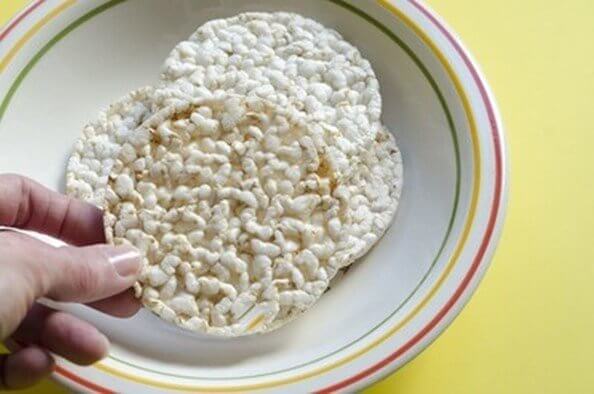
They are made from whole grains, which are packed with fibers, and have energizing carbs. To get really innovative, cut them into tiny pieces and add them to any salad. They will add a little added texture and won’t overpower the salad.
40. Vegetable Soup
Honestly, it doesn’t matter what season it is; we’re always in the mood for a good vegetable soup, preferably with some noodles. With only 59 calories for 3⁄4 cup, vegetable soup is one of the healthiest foods you can eat, no wonder we have it when we have a cold.

The natural minerals and vitamins that come from the vegetables are ingested into your body and provide a healthy burst to your system. Add all the vegetables you want, and most importantly, herbs like garlic, parsley, and dill for added deliciousness.
41. Edamame
Do you know that time at night when it’s half-past nine pm, you are tired from working all day, and you want to lay down on the couch, watch your favorite television show, and just snack on something? Well, edamame is the perfect nighttime snack.
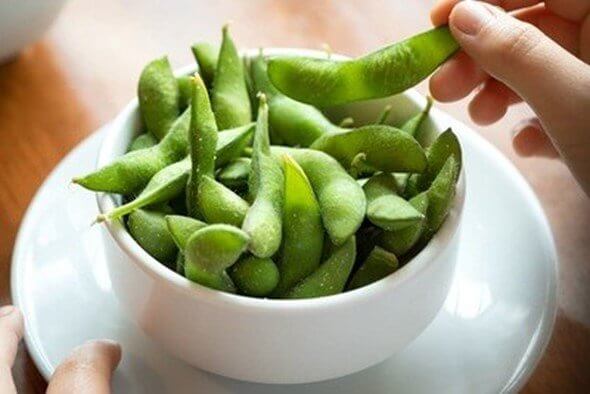
With only 63 calories for 2⁄3 cup, it has lots of protein, very little fat, and is super delicious, especially with a bit of salt sprinkled on top. Basically, all you have to do is boil the edamame in hot water for a couple of minutes, let it cool, and add some salt.
42. Salsa
Fresh homemade salsa is one of those incredible foods that go great with every meal you have planned. Homemade salsa has just under 30 calories for seven tablespoons, seven grams of carbs, and is fat-free! Obviously, specific recipes will differ but are still preferred over any store-bought dip.

Eat it generously with burritos, French fries, rice, taquitos, or tortilla chips. The sky’s the limit when it comes to homemade salsa, so don’t even think about those store-bought salsas and go create your own. Trust us; once you’ve gone homemade, you’ll never go back.
43. Scallops
Are you feeling like treating yourself to a scallop dinner? Five large scallops have just under 90 calories, 17 grams of protein, and about a gram of fat. Most people don’t know that scallops are a wonderful source of numerous trace minerals like copper, selenium, and zinc.

Adding scallops to your regular diet might prove to be helpful fairly quickly and will help with weight loss. According to researchers, people who are committed to a high protein diet are more likely to lose up to 5% of their weight compared to people on less protein-focused diets.
44. Bonus: The Best Foods to Boost Your Immune System - Blueberries
Blueberries have antioxidant properties that may boost the immune system. Besides being delicious, Blueberries contain a certain type of flavonoid called anthocyanin, which has antioxidant properties that can help boost a person’s immune system. According to research conducted by the University of Auckland, consuming flavonoids—a class of antioxidants found in blueberries—made adults 33 percent less likely to catch a cold than those who did not eat flavonoid-rich foods or supplements daily.
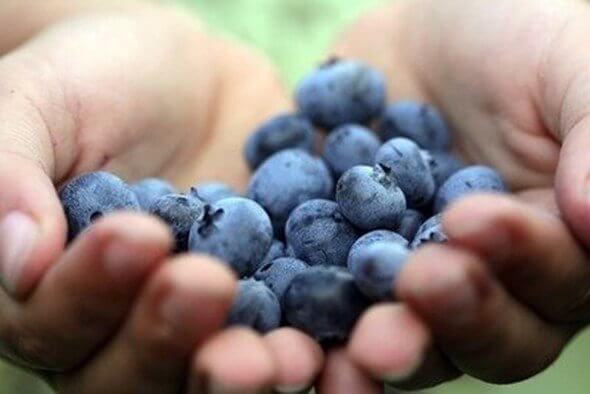
They are great for keeping weight as well. There’s a reason people have been eating blueberries for at least 13,000 years. Fun fact: British Columbia (CA) is the largest highbush blueberry growing region worldwide. Canada as a whole is ranked third just behind the US and Chile. Blueberries are Canada’s most exported fruit.
46. Broccoli
For the past 2000 years parents have been fighting with their children to eat more broccoli. Why? Because everyone knows broccoli is good for you. It even looks like a small tree. Broccoli is a great source of the famous vitamin C. It also contains potent antioxidants, such as sulforaphane. Broccoli and other cruciferous vegetables were proven to help boost immunity, according to the study.
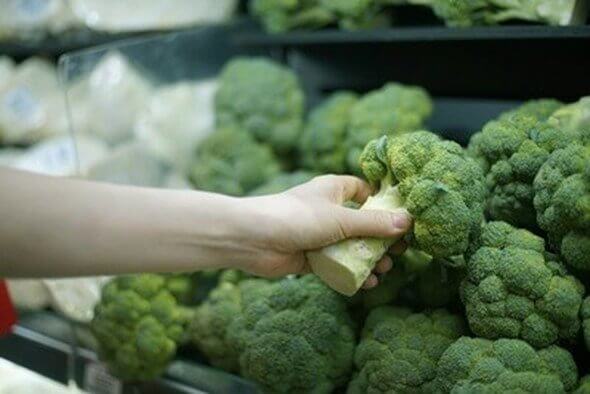
Researchers claim that sulforaphane turns on antioxidant genes and enzymes in specific immune cells, which combat free radicals in your body and prevent you from getting sick. To keep its nutrients, it’s best to steam it, steer-fry it. Any other method results in a 30% loss of nutrients.
45. Dark Chocolate
Are you like me and constantly looking for an excuse to eat more chocolate? Chocolate is called Dark or black when it contains cocoa solids, and cocoa butter, without the milk and sugar found in milk chocolate. This one might be the answer to all your prayers. Dark chocolate contains an antioxidant called theobromine, which may help to boost the immune system by protecting the body’s cells from free radicals.

Theobromine has also been proven to alleviate coughing. Free radicals are molecules that the body produces when it breaks down food or comes into contact with pollutants. Free radicals can damage the body’s cells and may contribute to disease. But remember, dark chocolate contains lots of calories and saturated fat, so it is important to approach it in moderation.
47. Turmeric
Turmeric is a yellow spice that many people use in cooking (it is what gives curry its yellow color). But it is also used in some alternative medicines. Consuming turmeric may improve a person’s immune response due to the qualities of curcumin, a compound in turmeric (This same compound is what lends turmeric it's signature vibrant orange-yellow color).

In traditional Chinese medicine, turmeric is used as an anti-inflammatory. According to a study published in the Journal of Clinical Immunology, curcumin activates the production of T-cells, which are the main cells fighting for your health in your immune system. It’s also known to reduce LDL cholesterol and enhance cognitive abilities.
48. Oily Fish
Today people eat just one-third of a portion instead of the recommended one portion per week of oily fish. These fish are a great source of long-chained omega 3 fats which are an essential part of our diet. Just to mention a few oily fish; Salmon, tuna, pilchards, and other oily fish are a rich sources of omega-3 fatty acids.

It is recommended to maintain a balanced diet than to take the omega-3 supplements you find in pharmacies. According to a 2014 report, long-term intake of omega-3 fatty acids may reduce the risk of rheumatoid arthritis (RA).RA is a chronic autoimmune condition that occurs when the immune system mistakenly attacks a healthy part of the body.
49. Sweet Potatoes
Many people confuse yam and sweet potato. Yam is a starchy root and sweet potatoes are fleshy and vary in color from white to orange to purple even. It is not a potato either and as such should not be used as substitute in cooking. Sweet potatoes are rich in beta carotene, a type of antioxidant that gives the skin of the potatoes its orange color.
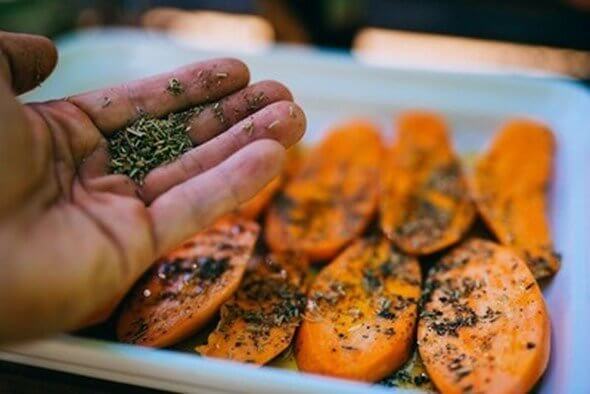
Beta carotene is a source of vitamin A. It helps to make skin healthy and may also help against skin damage from ultraviolet (UV) rays. Do not store sweet potatoes in the refrigerator rather than store it in a cool, dry place like the basement.
50. Spinach
Popeye knew what he was doing. Spinach may boost the immune system, as it contains many essential nutrients and antioxidants, including flavonoids, carotenoids, vitamin C and vitamin E. Vitamins C and E can help support the immune system. Other health benefits include helping eye health, cancer prevention, and reduced levels of blood pressure.

It is even said to prevent some hair loss thanks to its high concentration of iron. It’s best to eat spinach as fresh as possible as it loses nutrients with each passing day until 8 days after harvest. When fresh its leaves are crisp to bite. Raw spinach is also 91% water so it can be consumed in large quantities with no fear of weight gain. Win-win.
51. Ginger
When it comes to treating a common cold, ginger is one of the best foods for relief. People use ginger in a variety of dishes and desserts, as well as in teas. According to a review, ginger has anti-inflammatory and antioxidative properties and is likely to offer health benefits. Chinese healers and practitioners have used ginger for at least 3,000 years thanks to its medicinal relief properties.

They have also used ginger as a “carrier” herb, one that helps other herbs to be more effective in the body. Among the health benefits attributed: reduced hypertension, inflammation, DNA breakage, nausea, migraines, and amyloid-beta build-up, which is involved in Alzheimer’s disease.
52. Garlic
For most garlic is what mostly prevents other people come near them. Garlic has built a reputation for being one of the best cold-curing foods, and for a good reason. Garlic is used as a common home remedy for the prevention of colds and other illnesses. One review looked at whether taking garlic supplements containing allicin reduced the risk of getting a cold.
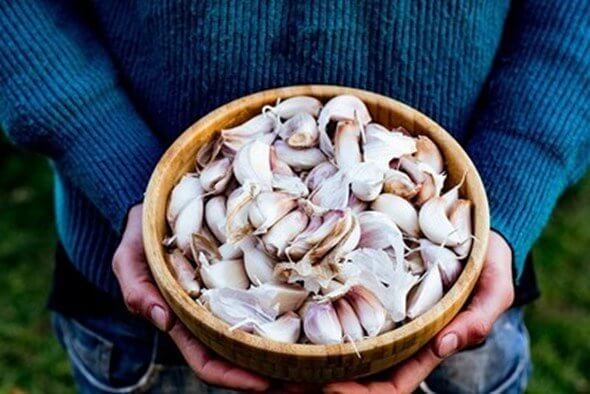
The placebo group had more than double the number of colds between them than those taking the garlic supplements. However, the researchers concluded that more research is necessary to determine whether or not garlic can help to prevent colds. It is also loaded with many vital minerals and vitamins such as potassium, iron, calcium, magnesium, manganese, zinc, selenium, beta-carotene, zeaxanthin, and Vitamin C.
53. Green Tea
Only 30% of tea consumed around the world is green tea despite it being the least processed kind of tea. Green tea contains only a small amount of caffeine, so people can enjoy it as an alternative to black tea or coffee. Besides helping you relax after a long day, drinking it may also strengthen the immune system.

It contains flavonoids, an antioxidant that boosts immunity, and it has anti-inflammatory properties. A study states that the antioxidant catechin, which is heavily prevalent in green tea, is known to be a powerful antibacterial and antiviral and can kill off cold-starting bacteria and the influenza virus. It is also said it helps to improve and maintain one’s cognitive function.
54. Kefir
Comes from the mountains of eastern Europe and is made out of a culture created using a base of animal milk, soybean milk, coconut milk, fruit juices, sugar, and molasses solutions. Kefir is a fermented drink that contains live cultures of bacteria that are beneficial for health. It is known to carry a heavy weight of probiotic micro-organisms.
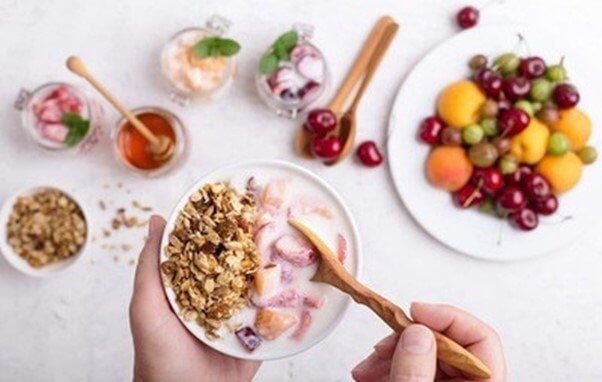
This improves digestion and helps the body to fight bacteria. Initial research suggests that drinking kefir may boost the immune system. According to a 2017 review, various studies have shown that regular consumption of kefir can help fight bacteria, reduce inflammation and increase antioxidant activity. The majority of the research that supports this was carried out on animals or in a laboratory. Researchers need to perform additional studies to understand how kefir may prevent disease in humans.
55. Sunflower Seeds
Vincent Van Gogh loved Sunflowers for a reason and it’s not just their majestic appearance. Sunflower seeds can make a tasty addition to salads or breakfast bowls. They are actually the fruits of the sunflower plant who is made of thousands of little flowers. They are a rich source of vitamin E and Selenium, both strong antioxidants.

These function to protect the body cells from free radical damage, which plays a role in several chronic diseases. Sunflower seeds may also help lower blood pressure, cholesterol, and blood sugar levels as they contain magnesium, protein, linoleic fatty acids, and several vital plant compounds. Did you know the sunflower plant is native to North America?
56. Almonds
Almonds were among the first cultivated crop starting 10,000 years ago. Almonds are another excellent source of vitamin E. They also contain manganese, magnesium, and fiber. Among the health benefits almonds offer are relief from constipation, respiratory disorders, coughs, heart disorders, anemia, impotency, and diabetes. They are also known to help maintain healthy hair, skin care, and dental care.

A surprise considering 40% of the world’s total amount of almonds are actually used by chocolate and other candy makers. A small handful or a quarter of a cup of almonds is a healthful snack that may benefit the immune system and a good daily habit. By the way, almonds rely 100% on bees for pollination so no bees – no almonds.
57. Oranges or Kiwis
Oranges and kiwis are an excellent sources of vitamin C, which is the vitamin that many people turn to when they feel a cold developing. They both relatively low on calories with a low glycemic index and very high on nutrients and vitamins. While scientists are still not sure exactly how it helps, vitamin C may reduce the duration of common cold symptoms and improve the function of the human immune system.
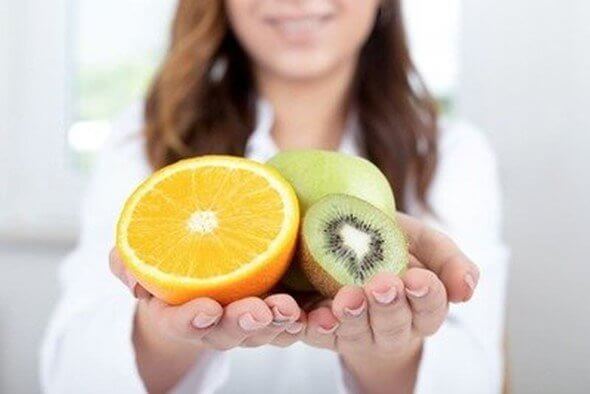
More amazing facts about kiwis; they can help protect your DNA from oxygen-related damage and they are highly recommended for people dealing with asthma thanks to the high levels of vitamin C who helps the respiratory system.
58. Red Bell Peppers
For people trying to avoid the sugar in fruit, red bell peppers are an excellent alternative source of vitamin C. They have twice the Vitamin C as citrus fruits and this is a boost of antioxidants to the body. They can be found in a variety of colors from red, yellow, and green. The time spent on the plant and its ripeness determine the color.

As they rip and become red, they grow in nutrients as well. Red peppers have twice the vitamin C than green ones. They are also a great source of Vitamin A. Traditional Chinese Medicine used bell peppers for treating some conditions like poor blood circulation, various indigestion problems, loss of appetite, swelling, frostbite, and digestive issues.
59. Chicken Noodle Soup
Just ask any grandmother and she will tell you Chicken soup is the key to surviving cold and flu season, and not just because of the warm comfort food feels to it. According to a study conducted by the University of California Los Angeles, this soup has some anti-inflammatory properties and can calm down inflammation in the upper respiratory tract that takes place when you catch a cold. The study also noted that the soup helps relieve nasal congestion.

Basically, it’s all about the whole being bigger than its parts – chicken noodle soup includes chicken broth, root vegetables (that are full of vitamins A and C and other antioxidants), chicken (protein), and noodles (carbs). In the bowl, vitamins, minerals, and antioxidants come together and give chicken noodle soup its power to support a strong immune system.
60. Water
Let’s start at the basics, water is the most important thing for your body. If you don’t get enough of it all the previous advice is in vain. It is said to clean drinking water can clear a third of all occupied hospital beds in the world and 80% of illness in the developing world is related to water. When you’re feeling sick, a good portion of water can be one of the most helpful things you can sip on.

According to The Mayo Clinic, staying hydrated can help loosen trapped mucus. Try drinking at least the recommended 8 glasses of water a day to keep yourself fully hydrated, as we tend to lose more fluids when we’re sick.
61. Greek Yogurt
Sure you’ve heard marketing slogans like probiotics. Apparently, Greek yogurt is filled with sickness-fighting probiotics and is packed with more protein than regular yogurt. A meta-analysis published in the Korean Journal of Family Medicine found that probiotics can be helpful in preventing and treating the common cold.

The researchers discovered that people who ate probiotics daily had a lower risk of catching a cold than those who did not eat any probiotic-rich food. It’s also considered a super food as it’s packed with protein, low in carbohydrates, and high in calcium. It has twice more protein and half the carbs as regular yogurt. Just remember it is still a dairy product so if you suffer from tolerance issues it might be best to avoid it.
62. Ginseng Tea
Ginseng tea is popular for more reasons than its delicious taste. Namely, tea has been used as a treatment for upper respiratory tract infections (a.k.a. the common cold). A review published in the Canadian Medical Association Journal noted that ginseng has been shown to significantly reduce the symptoms of colds and influenza. However, the researchers noted that more research needs to be conducted to support ginseng’s immunity-boosting claims fully.

Traditional Chinese medicine men have used this fleshy root to slow age, enhance cognitive functions and improve general health and body vitality for centuries. 2 most popular types of Ginseng are the Chinese and American. It is also referred to by many as a boost to one's sexual performance.
63. Tomatoes
Maybe it’s time to start growing your own vegetable garden. Tomatoes are great to eat when feeling sick due to their high concentration of vitamin C. Just one medium tomato contains more than 16 milligrams of vitamin C, which is a proven fuel to your body’s immune system. In a German study, vitamin C was shown to be a vital part of the strength of the body’s phagocytes and t-cells, two key components of the body’s immune system.

The researchers also noted that a deficiency in this nutrient can lead to a weaker immune system and lower resistance to certain pathogens that can lead to illness. Men know this – Tomatoes are the richest source of lycopene which is vital for the health of the male prostate.
64. Extra Virgin Olive Oil
The difference between Extra Virgin Olive Oil and regular “pure” olive oil is in the extraction process. In Extra Virgin Olive Oil, they extract it with a cold press with no added heat so the oil retains its original characteristics and nutrients. But in comparison to pure olive oil, it has a lower smoking point which makes it a hard choice for cooking.

This oil has been shown to help rebuild and boost the body’s immunity. A study published in the British Journal of Nutrition found that olive oil’s high content of polyunsaturated fatty acids act as an anti-inflammatory agent in the body. The acids also assisted in boosting the immune system and guarding the body against infection.
65. Whole Grain Bread
Most people talk about eating bread as if they are confessing a sin or a vice. But this is not the case always and not the whole truth for that matter. It can be a great way to eat the recommended daily dose of whole grains. Whole grains are unrefined grains that contain the germ, bran, and endosperm, while refined grains contain only the endosperm.

According to a study published by The American Journal of Clinical Nutrition, whole grains are known to have some anti-inflammatory properties, which allows for an increase in the production of healthy bacteria. 70% of your immune system lives in your gut and intestine, so, it’s important to keep it healthy if you want to fend off any disease-causing germs.
66. Eggs
Eggs, and especially eggs’ yolks (the yellow stuff), are full of immunity-boosting nutrients. Eggs contain a high amount of vitamin D, which is vital in regulating and strengthening our immunity system. According to a study published by the JAMA journal, participants who took a daily serving of vitamin D in the wintertime were less likely to catch a cold or any other upper respiratory tract infection in comparison to those who did not take it.

Eggs also contain protein of the highest quality available. It’s also great for your diet as it is low on fat and calories (70 calories per egg). By the way, an egg’s shell color has nothing to do with its nutritional qualities.
67. Apples
There’s a reason why the phrase “An apple a day keeps the doctor away” is so annoying. Because it’s true. Turns out apples actually can help prevent illnesses such as the common cold. This delicious fruit contains phytochemical antioxidants, according to a study published in the Nutrition Journal. These antioxidants help boost immunity and reduce the risk of chronic diseases.

They are also an excellent source of much-needed fiber. They are fat, sodium, and cholesterol-free so you can eat them in large portions with no worries. 2,500 of the 7,500 types of apples are grown in the U.S. and apples are grown in all states. In colonial America, they were called “winter bananas”.
68. Rosemary
Rosemary isn’t just a tasty herb to add to baked goods. You can find growing wild and evergreen in many places and is very easy to grow your own at home. It’s also an amazing anti-inflammatory and is a rich source of antioxidants. Research noted that rosemary, like many other herbs, contains antioxidants that serve as an anti-inflammatory agent in our body.

This effect allows for better digestive functions and general gut health, leading to a boost in your immune system. It is mostly used as a spice in many dishes from stews to broths with lamb, meat, chicken, fish, seafood, and vegetables. It is also a solid source of Vitamin A, Thiamin and Magnesium, Dietary Fiber, Vitamin C, Vitamin B6, Folate, Calcium, Iron, and Manganese.
69. Bone Broth
Sometimes called stock, animal-based bone broths could be the key reason why we tend to bring soups to our sick loved ones. First off – Bones are rich in vitamins and various nutrients, such as calcium, magnesium, and phosphorous. It is rich in collagen which helps proteins to build. According to a study by the American College Of Chest Physicians, chicken soup’s broth could be the reason for its anti-inflammatory effect on the body, which leads to relief from major cold symptoms.

Many claims its advantage is containing so many nutrients in an easy-to-consume form. You can carry it around in a thermos as many do. Some also claim it helps them to get better sleep thanks to the amino acids in it.
70. Oysters
Besides keeping our immunity system strong, Zinc is a mineral that’s important to the body in many other ways. It helps heal wounds, supports growth, and more. Oysters, like other types of seafood, are high in zinc. And they’re one of the highest recommended kinds of seafood to eat for incorporating zinc into your diet. Eating four oysters a day provides your body with a complete daily supply of copper, iodine, iron, magnesium, manganese, phosphorus, and zinc. Oysters are also rich in vitamins A, D, C, and B-12.

The latter is a well-known nutrient that helps people with weight loss and is attributed to a sharp memory. As you see, although you won’t find any pearls hiding in one, they are still good for you.
71. Raw Honey
There’s a reason we go to honey tea whenever we feel a cold coming. All-natural, raw honey not only tastes delicious (and never goes sour. NEVER!) but it also can help soothe the symptoms of a cold. Honey is known to be helpful in relieving sore and itchy throats by soothing irritation in your throat.
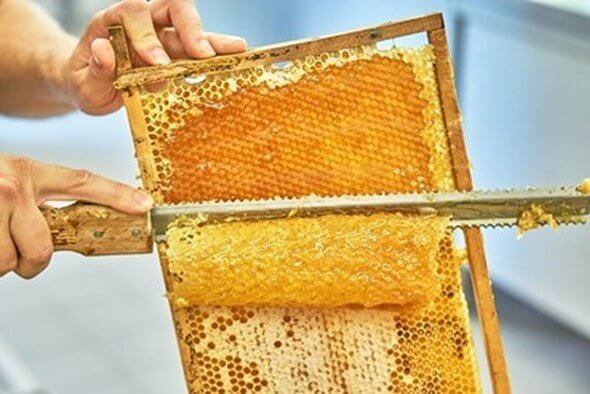
Studies also show that honey acts as an antibacterial, killing any germs in the body that can cause you to get sick. Honey is the only natural “growing” edible product that consists of all the nutrients which are vital to sustaining life, including vitamins, enzymes, minerals, and water. It’s also the only natural edible product that contains pinocembrin that improves brain functioning.
72. Mushrooms
Mushrooms are so interesting and amazing. We really recommend learning more about them. Apparently, they’re also great for boosting the body’s immunity system. According to a study done by the University of Florida Institute of Food and Agricultural Sciences, participants who ate mushrooms every day for four weeks had a significant increase in numbers and strength of immunity-boosting T-cells.

They also noticed a reduction in inflammatory-inducing proteins, proving that mushrooms also act as an anti-inflammatory agent. Traditional Chinese medicine men have utilized the healing properties of mushrooms for centuries and still do. They are also known to help with reducing blood pressure, balancing blood sugar index, reducing cholesterol, reducing stress and much more.